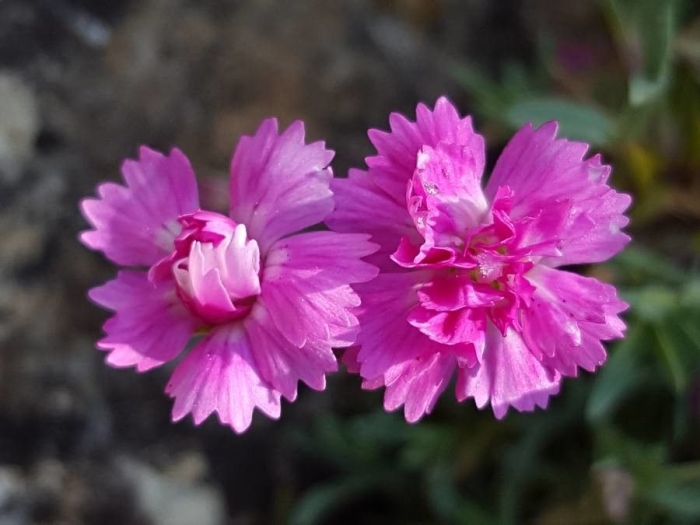Carnation
(Dianthus caryophyllus)
Carnation (Dianthus caryophyllus)
/
/

Michel Nialon
CC BY-SA 4.0























































Estimated Native Range
Summary
Carnations are appreciated for their long-lasting flowers and are commonly used in floral arrangements, boutonnieres, and corsages. They are also popular in border plantings and as cut flowers due to their variety of colors and pleasant fragrance. Carnations require well-drained, neutral to slightly alkaline soil, and thrive in full sun. They are relatively easy to maintain, but can be susceptible to fungal diseases such as rust and root rot if not properly cared for. Popular cultivars include ’Gina Porto’, ’Helen’, ’Laced Romeo’, and ’Red Rocket’, each offering unique flower forms and colors. In addition to ornamental uses, carnations have historical medicinal uses for treating conditions like upset stomach and fever, and their fragrance has been used in food and drink preparations.CC BY-SA 4.0
Plant Description
- Plant Type: Herb
- Height: 1-1.5 feet
- Width: 0.8-1 feet
- Growth Rate: Slow
- Flower Color: Pink, Purple, Red, White
- Flowering Season: Summer
- Leaf Retention: Evergreen
Growth Requirements
- Sun: Full Sun
- Water: Medium
- Drainage: Fast, Medium
Common Uses
Bee Garden, Bird Garden, Border Plant, Butterfly Garden, Deer Resistant, Drought Tolerant, Edible*Disclaimer: Easyscape's listed plant edibility is for informational use. Always verify the safety and proper identification of any plant before consumption., Fragrant, Groundcover, Hummingbird Garden, Low Maintenance, Potted Plant, Rabbit Resistant, Rock Garden, Salt Tolerant, Showy Flowers, Street Planting
Natural Habitat
Native to the Mediterranean region, particularly in areas with limestone-rich soils
Other Names
Common Names: Clove Pink , Divine-Flower , Gilly-Flower , Border Carnation , Land-Nelke , Garten-Nelke , Nelke , Garten-N. , Clavel , Oeillet
Scientific Names: Dianthus caryophyllus , Dianthus arenarius , Dianthus longicaulis , Dianthus corsicus , Dianthus miniatus , Dianthus multinervis , Dianthus arbuscula , Dianthus arrectus , Dianthus coronarius , Dianthus moschatus
GBIF Accepted Name: Dianthus caryophyllus L.